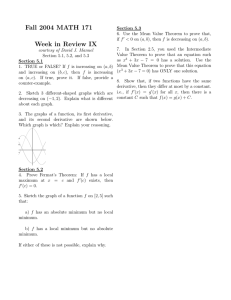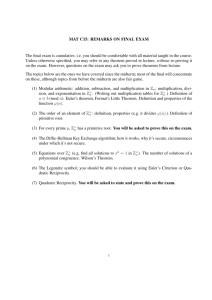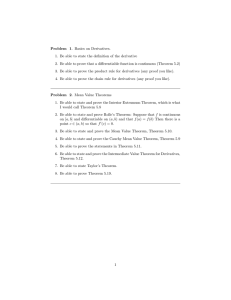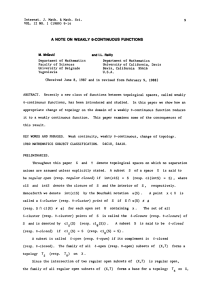EXAM Practice Problems for Final Exam Math 4350, Fall 2009 December 10, 2009
advertisement
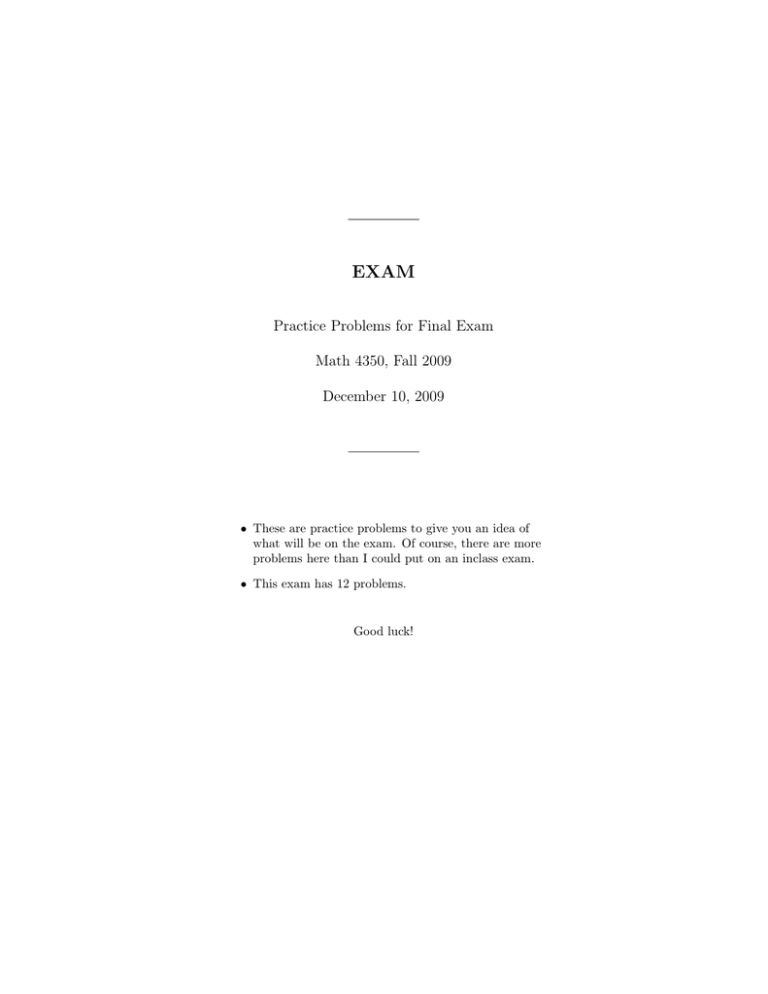
EXAM Practice Problems for Final Exam Math 4350, Fall 2009 December 10, 2009 • These are practice problems to give you an idea of what will be on the exam. Of course, there are more problems here than I could put on an inclass exam. • This exam has 12 problems. Good luck! Problem 1. Give the definition of the derivative of a function, using ε and δ. Problem 2. Let f : I → R, where I is an interval. Let a be a point in I. A Let m be a number. Show there is a unique function φ : I → R such that i.) For all x ∈ I, f (x) = f (a) + m(x − a) + φ(x)(x − a) ii.) φ(a) = 0. B Show that f is differentible at a and f 0 (a) = m if and only if φ is continuous at a. C Let f (x) = x2 , a = 3 and m = 5. What is φ(x)? Does f 0 (3) = 5? Explain. D Let f (x) = x2 , a = 3, and m = 6. What is φ(x)? Does f 0 (3) = 6? Explain. Problem 3. State the product rule for derivatives. Prove it (whichever proof appeals to you). Problem 4. State the chain rule for derivatives. Prove it (whichever proof appeals to you). Problem 5. Use the definition of derivative to find f 0 (x) where f (x) = 1 , x x 6= 0. Problem 6. Suppose that f : I → R, where I is an interval. Assume that f is continuous, so J = f (I) is an interval. Suppose that f is strictly monotone, so the inverse function f −1 : J → I exists. A. Assume that the inverse function is differentible Use the chain rule to find a formula for the derivative of the inverse function. B. Prove that f −1 is in fact differentible. Problem 7. State the Interior Extremum Theorem. Prove the theorem. 1 Problem 8. State Rolle’s Theorem. Prove the theorem. Problem 9. State the Mean Value Theorem. Prove the theorem. Problem 10. Let f : R → R be the function definined by ( x2 sin(1/x), x 6= 0 f (x) = 0, x = 0. Show that f is differentible at all points of R and find f 0 . Hint: for x = 0, use the definition of derivative directly. Show that f 0 is not continuous at 0. Problem 11. State Darboux’s Theorem. Prove the theorem. Problem 12. Let f : I → R be differentible on the interval I. Show that f is (weakly) increasing on I if and only if f 0 (x) ≥ 0 for all x ∈ I. Here, weakly increasing means that for x, y ∈ I, x < y =⇒ f (x) ≤ f (y). 2

